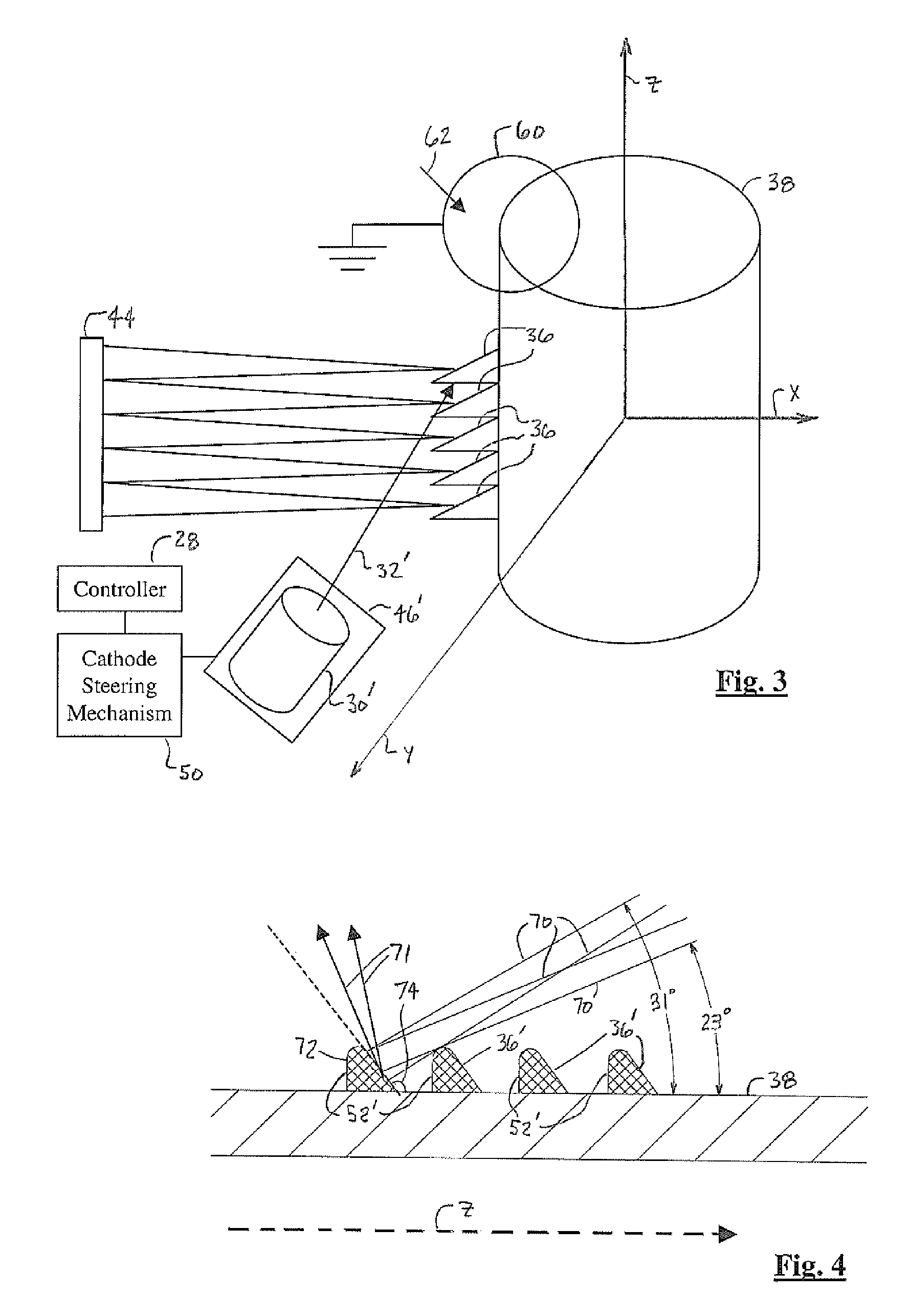Wide scanning x-ray source
a wide scanning and source technology, applied in the field of x-ray imaging systems, can solve the problems of reducing image quality, limiting the scanning width of objects, and reducing the use of single focal spot tubes with larger detector arrays, so as to reduce the exposure of x-ray to patients, increase scanning speed, and wide scan
- Summary
- Abstract
- Description
- Claims
- Application Information
AI Technical Summary
Benefits of technology
Problems solved by technology
Method used
Image
Examples
Embodiment Construction
[0026]In each of the following figures, the same reference numerals are used to refer to the same components. While the present invention is described with respect to a method and system for performing a wide scan of an object within an computed tomography (CT) imaging system, the following apparatus and method is capable of being adapted for various purposes and is not limited to the following applications: CT systems, radiotherapy systems, x-ray imaging systems, ultrasound systems, nuclear imaging systems, magnetic resonance spectroscopy systems, and other applications known in the art.
[0027]Also, the present invention although described as being used in conjunction with a CT tube may be used in conjunction with other imaging tubes including x-ray tubes and vascular tubes.
[0028]Additionally, the terms “wide scan” refer to an x-ray source scanning width that is approximately greater than 10 mm. For example, in one embodiment of the present invention an x-ray source of the present i...
PUM
 Login to View More
Login to View More Abstract
Description
Claims
Application Information
 Login to View More
Login to View More - R&D
- Intellectual Property
- Life Sciences
- Materials
- Tech Scout
- Unparalleled Data Quality
- Higher Quality Content
- 60% Fewer Hallucinations
Browse by: Latest US Patents, China's latest patents, Technical Efficacy Thesaurus, Application Domain, Technology Topic, Popular Technical Reports.
© 2025 PatSnap. All rights reserved.Legal|Privacy policy|Modern Slavery Act Transparency Statement|Sitemap|About US| Contact US: help@patsnap.com



